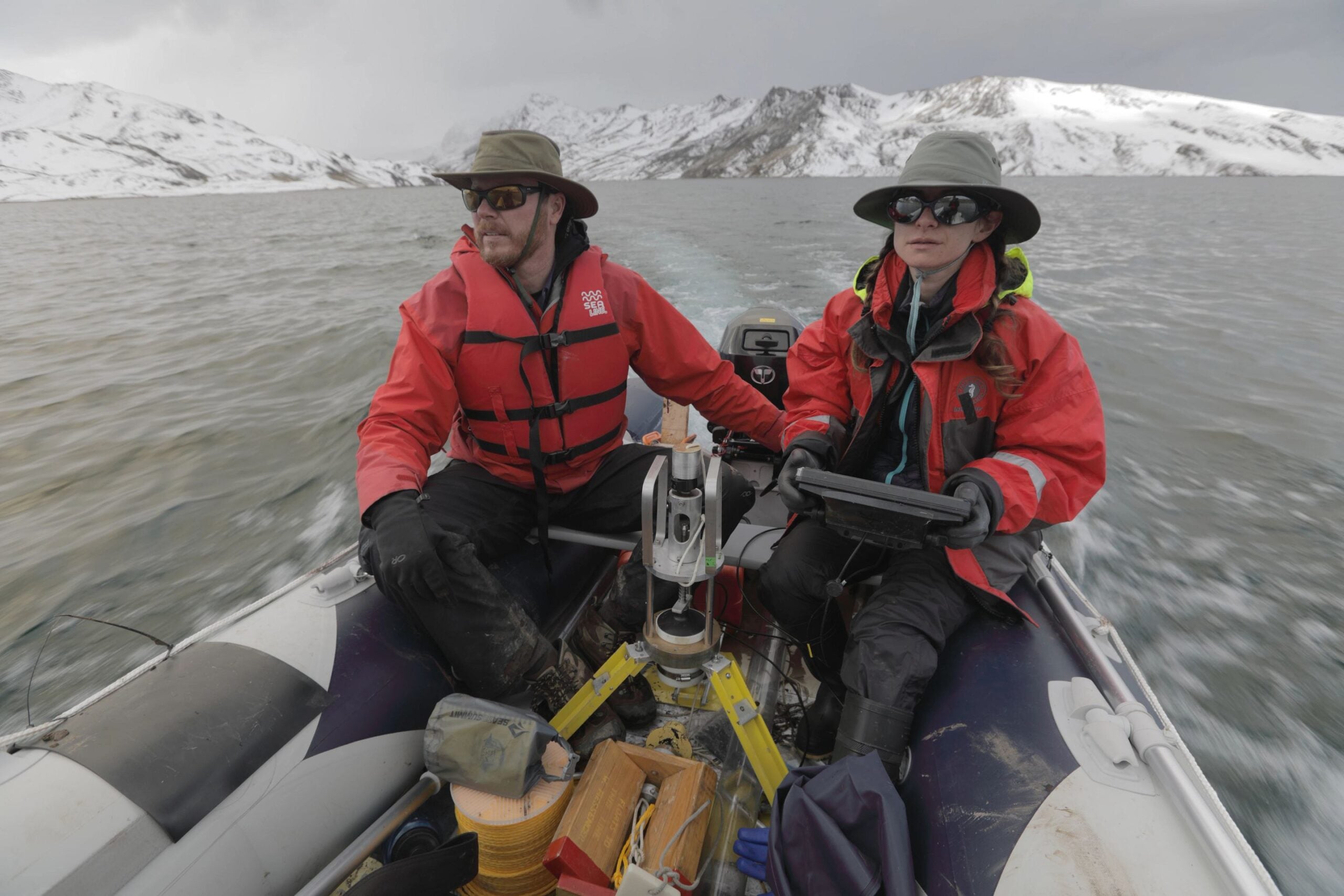Two scientists from Washington University are reconstructing past climate and cultural shifts in the Peruvian Andes. Today, such high-altitude parts of the tropics are warming faster than the rest of the globe. And there has been little data on climate in the Andes to explain why.
Bronwen Konecky, assistant professor of Earth and planetary sciences, and Sarah Baitzel, assistant professor of anthropology, both in Arts & Sciences, set out to fill the void. Together, they made the risky journey into a dynamic environment of fluctuating glaciers, snowpack, lake levels, and ecosystems.
At 16,000 feet, high above the tree line in the central Andes Mountains, there is snow on the ground. The icy edge of a glacier is wedged between mountains nearby. But there is so much sun here, for so many hours of the day, that the largest high-alpine lake in the Andes never fully freezes.
This site, this lake, potentially holds vital information about past climate changes. This is something that we can use to help understand what might happen in the future, but also what could have happened in the past and how that could have shaped the way that people were living in the Andes.
Bronwen Konecky
Konecky, works in tropical regions around the world, gathering evidence of climate change in the geologic past. Using data from rain samples and the muck of dirt, leaves, and other organic matter decomposing at the bottom of lakes, she is piecing together a story about the Earth’s climate history — and what it could tell us about our planet’s future.
About 70% of the world’s tropical glaciers, already a rarity, are in the highlands of Peru. But they are rapidly disappearing. While scientists believe that human activities have caused much of this warming, they don’t know for sure what comes next. Model projections of the future of the tropics are highly dependent on variables that are still being teased out, such as the relative role of natural climate variability versus external forcing (i.e., human-caused changes) on regional temperature, precipitation, and evaporation.
Over the last thousands of years, local herders have developed a way of living here. And that way — with the unpredictability of climate change — is no longer sustainable for them.
Sarah Baitzel
To help make these connections, Konecky reached out to Baitzel, who was intrigued by the cultural adaptations—the highly specialized way of life that developed in such a marginal environment. Together, they submitted a proposal for seed funding from Washington University’s International Center for Energy, Environment and Sustainability. They also received funding from the National Geographic Society.
The researchers looked for clues that suggested how the people and animals in this delicate ecosystem might be affected in the future.
“In marginal environments — geographic places where it is already difficult to eke out an existence, like at high-altitude Lake Sibinacocha — climate change has an amplified effect on the way people live,” Baitzel says. “Over the last thousands of years, local herders have developed a way of living here. And that way — with the unpredictability of climate change — is no longer sustainable for them.”
Learn more about the researchers’ remarkable efforts to reconstruct past climate and cultural shifts in the Peruvian Andes: Sacred Sediments-a climate journey in Peru.
